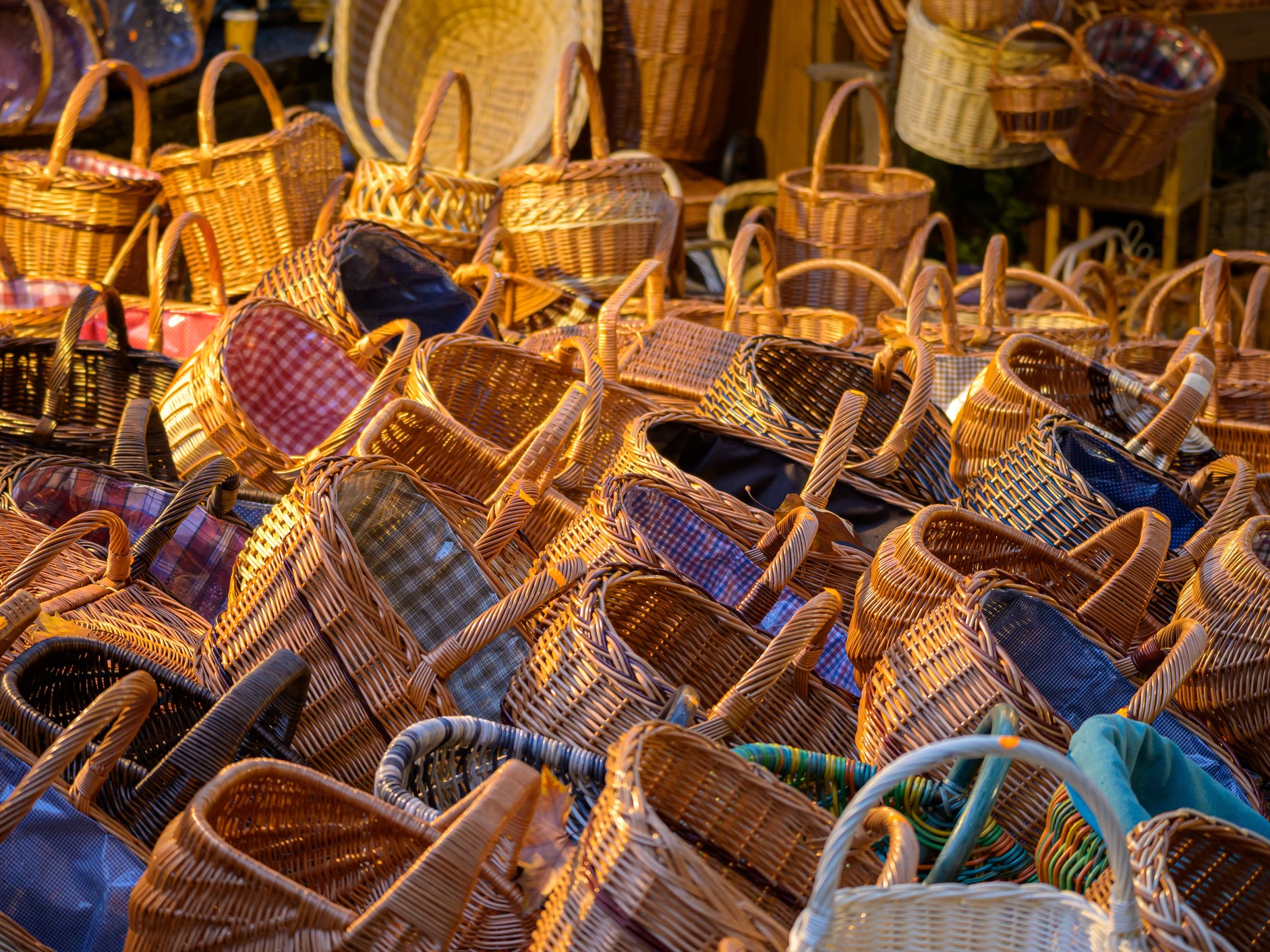
 We the Italians Editorial Staff
We the Italians Editorial Staff
Italian handcrafts: Traditional craftsmanship of Sicily, a cultural treasure
- WTI Magazine #186 Apr 18, 2025
-

 We the Italians Editorial Staff
We the Italians Editorial Staff
Sicily, the largest island in the Mediterranean, has a rich and diverse cultural heritage, and its traditional craftsmanship is a testament to this. The island’s history, shaped by centuries of diverse influences, from the ancient Greeks and Romans to the Arabs, Normans, and Spanish, has resulted in a vibrant tapestry of crafts that continue to thrive today.
Sicily's artisans are known for their skill, creativity, and dedication to preserving age-old techniques that have been passed down through generations. One of the most iconic forms of Sicilian craftsmanship is basket weaving, with roots going back centuries. The island’s wicker and reed baskets are still crafted by hand using techniques that have been honed over generations.
These baskets are traditionally used for practical purposes, such as carrying fruit and vegetables, but they also serve as beautiful decorative pieces. The process of weaving these baskets requires exceptional skill, and artisans often add personal touches to each one, making them unique. In some areas, basket weaving has evolved into a form of artistic expression, with intricate designs and patterns that showcase the weaver’s creativity.
Another famous craft from Sicily is its ceramics. Sicily’s ceramic tradition dates back to the ancient Greek and Roman periods, and today, it is one of the island's most recognized crafts. The town of Caltagirone, in particular, is famous for its hand-painted pottery, which is often adorned with intricate, colorful designs. The town’s ceramic creations range from decorative pieces to functional items like plates, bowls, and vases. These items typically feature vivid colors, geometric patterns, and images of traditional Sicilian symbols, such as citrus fruits, flowers, and animals. The craftsmanship in Caltagirone is renowned for its detailed hand-painting, which continues to be done by skilled artisans in small workshops throughout the town.
Sicilian embroidery, especially in the form of lace-making, is also an important aspect of the island's craft traditions. The intricate lacework of Sicily is often produced by hand and is known for its delicacy and beauty. The town of Palermo, in particular, is famous for its fine lacework, which has been made for centuries. Sicilian lace is typically used for creating elegant garments, tablecloths, and accessories, often with floral or geometric patterns. The skill required to create these delicate pieces is passed down through generations, with young girls often learning the craft at a young age.
Another important aspect of Sicilian craftsmanship is the production of wood carvings. In the mountainous regions of Sicily, artisans have long been known for their exceptional skill in woodwork. These crafts range from the creation of ornate furniture, including chairs, tables, and cabinets, to the production of religious statues and icons. The art of carving wood has deep religious significance in Sicily, and many woodworkers specialize in creating intricate representations of saints, the Madonna, and other religious figures. These carvings often play a central role in the island’s many religious festivals and celebrations, including processions and other public events.
Coral craftsmanship in Trapani, Sicily, is a centuries-old tradition, renowned for producing exquisite jewelry and decorative items from red coral. Trapani, located on the western coast of Sicily, has been a center for coral processing since ancient times, benefiting from the abundance of coral in the nearby Mediterranean Sea. Skilled artisans meticulously carve and shape the coral into intricate pieces, such as necklaces, bracelets, earrings, and religious objects. The vibrant red coral, often symbolizing life and protection, is highly valued for its beauty and cultural significance. Trapani's coral craftsmanship continues to be a proud part of Sicily's artisanal heritage.
Finally, one cannot overlook the importance of Sicilian jewelry, which is often made using gold, silver, and precious stones. The island has a rich tradition of jewelry-making that dates back to the ancient Greeks, and many contemporary artisans still use traditional methods to create beautiful pieces. Sicilian jewelry is often characterized by bold, intricate designs, and it frequently incorporates symbols of the island's history and culture, such as the Trinacria, the three-legged symbol of Sicily.
Last but not least, Sicilian puppets, or "pupi," are traditional handcrafted figures with a rich cultural history in Palermo. These puppets are made from wood, with painted heads and bodies, adorned with brass armor, and dressed in elaborate costumes. The craft dates back to the 18th century and is closely tied to the Sicilian "Opera dei Pupi," a form of puppet theater that tells tales of medieval chivalry and heroism. Each puppet is meticulously created by skilled artisans, preserving ancient techniques. The unique design and vibrant colors reflect the island's cultural heritage, making the Sicilian pupi a symbol of craftsmanship and storytelling.